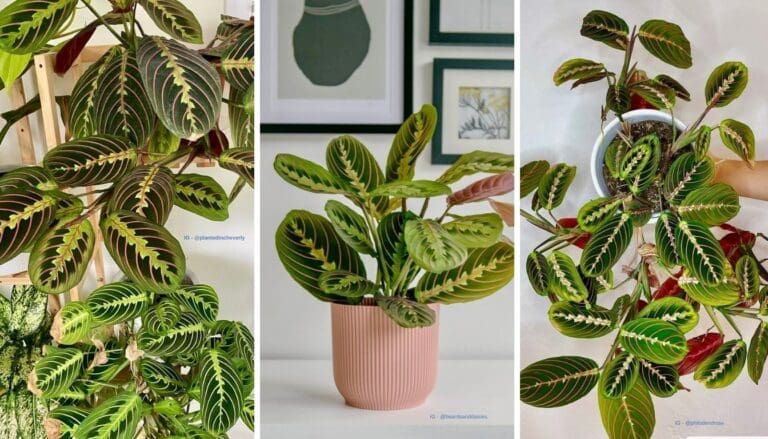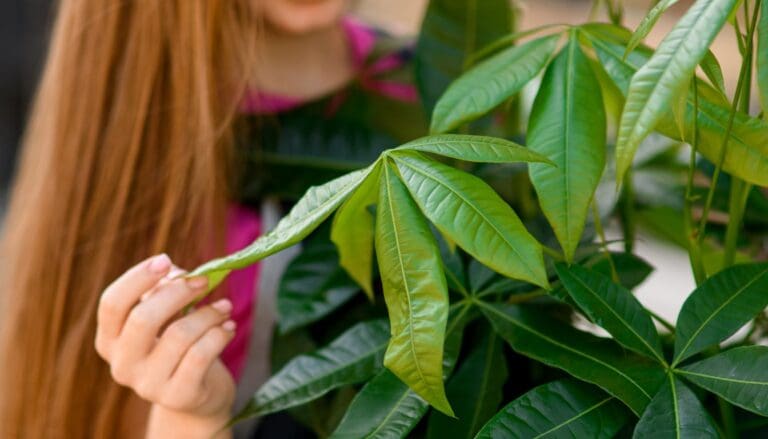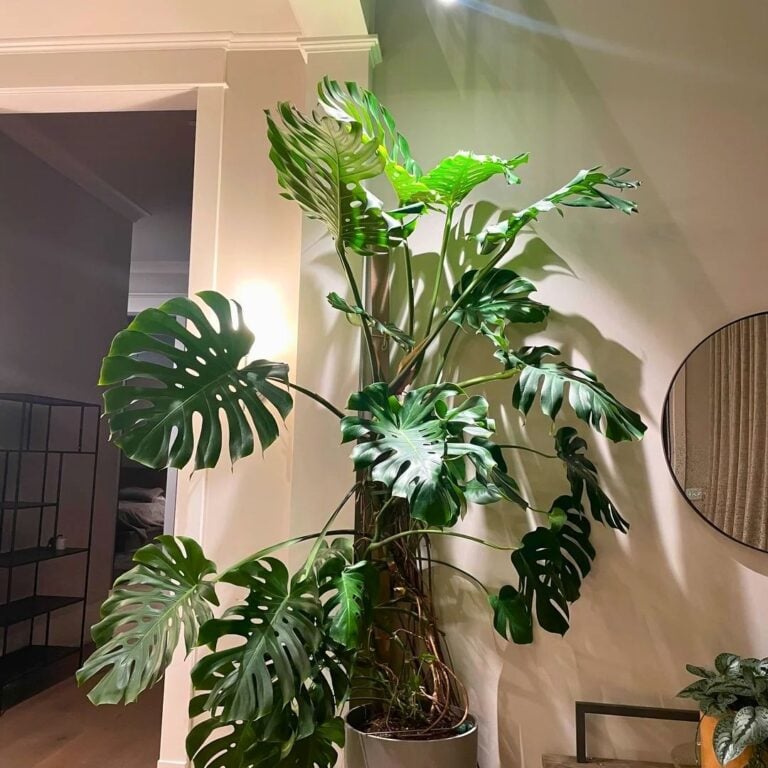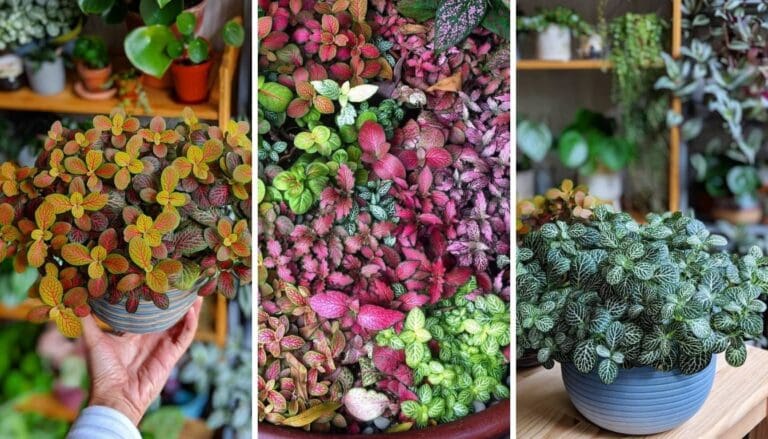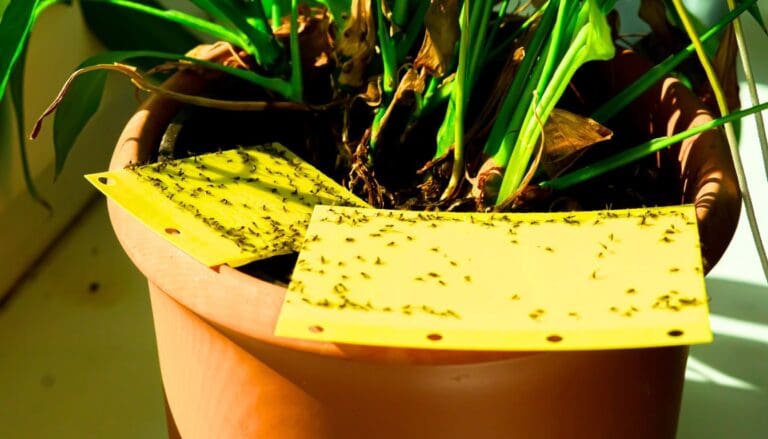5 Simple Ways to Keep Tropical Plants Happy in Fall
When fall rolls around, I start to notice my tropical plants looking a bit droopy. The cooler air and shorter days really seem to throw them off.
I’ve picked up a few easy tricks to keep my tropical plants happy and strong when autumn hits. With just a handful of simple tweaks, I can help them thrive through the season.
Please note: Simplify Plants is reader-supported. As an Amazon Associate, I earn from qualifying purchases made by our readers with no extra cost added to you all! Some links in the post are affiliate links and I get a commission from purchases made through links in the post.
1) Place plants near east-facing windows for gentle morning light

I always try to make sure my tropical plants get enough sunlight, especially as fall sets in. East-facing windows are my go-to spot since they let in that soft morning light.
Tropical plants crave warmth and light, but I’ve learned that strong afternoon sun can scorch their leaves. I keep mine where they can soak up bright light in the morning and stay protected later on.
As days get shorter and the house feels dimmer, putting my plants by an east window really helps. They get that important sunlight right at the start of the day.
If I don’t have an east-facing window, I’ll hang a sheer curtain over a south-facing one. That way, the light stays gentle and the plants don’t get frazzled.
I’ve noticed when my plants get gentle light in the morning, their leaves stay green and vibrant. Sometimes I’ll even spot new leaves popping out, which is always a nice surprise.
Every week or so, I turn the pots a bit. Turning them helps each side get some light, so they don’t get all lopsided.
If I see my plants stretching toward the window, it’s a sign they want more sun. Scooting them closer to the glass or clearing off the sill usually does the trick.
This step only takes a minute, but it really seems to help my tropicals adjust to the season. The morning sun gives them a boost to start the day.
Honestly, good light every morning is the easiest way to keep my plants happy.
2) Reduce watering gradually as temperatures drop

When fall hits, I pay extra attention to how much I water my tropical plants. Cooler weather means they just don’t need as much.
I ease up on watering slowly, instead of cutting back all at once. This gives the plants time to adjust and keeps their roots happier.
If I go overboard with water in the fall, the soil stays wet too long. Wet soil can cause root rot, which is a pain to fix.
I stick my finger in the top inch of soil before watering. If it feels damp, I wait another day or so. It’s a simple trick, but it’s saved me from drowning my plants more than once.
Growth slows down in fall, so plants use less water. Cutting back gradually keeps them from getting stressed.
I try to water early in the day so the leaves and soil have time to dry out before nightfall.
Room temperature water is a must—cold water can shock the roots, and I’ve seen it make leaves drop.
If the air gets dry, I might mist the leaves a bit, but I still keep the soil on the drier side.
Never let plants sit in soggy soil. I always check that my pots have drainage holes.
Every plant is a little different, so I watch the leaves. Yellow or droopy leaves might mean too much water, while crispy ones often mean not enough.
Honestly, it’s safer to underwater tropicals in the cold months than to overdo it.
Tweaking my watering routine for the season really helps my plants stay strong.
3) Use a humidifier to maintain moisture levels
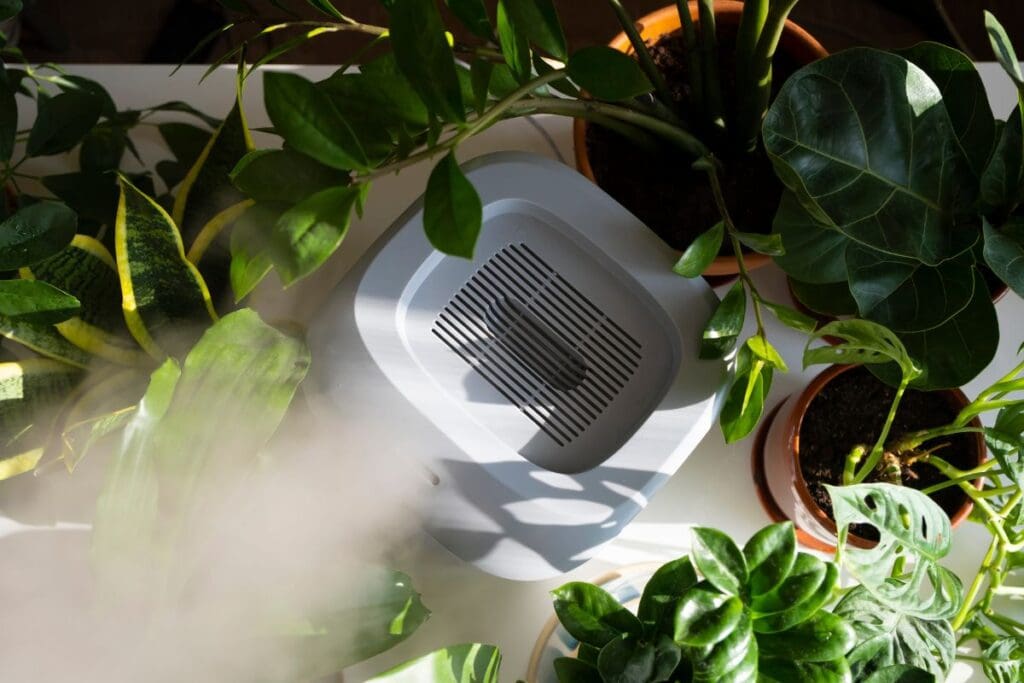
I can always tell when the air gets dry—my tropical plants start to look unhappy. These guys really like higher humidity, and fall heating just dries everything out. That’s why I set up a humidifier to keep the air moist.
A humidifier is easy to use and helps keep leaves from going crispy or brown. I usually set it to 50–60% humidity and place it in the same room as my plants.
Some days, I’ll spot water droplets on the leaves, which tells me the air’s just right. If things feel dry, I bump the humidifier up a bit. Consistent humidity really makes a difference.
I check the humidifier every few days, refill it with clean water, and wipe it down to avoid any mold. Clean water matters for the plants and my own air quality.
I keep the humidifier near the plants but not right on top of them. That way, the moisture spreads out and creates a better environment for all my tropicals.
Even a small humidifier helps. If I don’t have one handy, I’ll group my plants together or set out a tray of water nearby. But honestly, the humidifier is the easiest fix for dry fall air.
4) Trim dead or yellow leaves to encourage growth

I make a habit of checking my tropicals for dead or yellow leaves every week or so. Those leaves aren’t doing any good and just sap energy from the plant. I grab some clean scissors and snip them off.
Trimming off the sad leaves helps my plants stay healthy and look better. Plus, it frees up energy for new, green growth.
I look for leaves that feel dry, faded, or mushy. Brown edges or yellowing? I cut them close to the stem, but I’m careful not to go overboard.
Keeping up with dead leaf removal really makes a difference. The plants seem to perk up and look tidier.
It’s also a good time to check for pests or weird spots. When I’m trimming, I notice problems before they get bad.
Clean tools are key. I wipe my scissors before using them so I don’t spread anything nasty from plant to plant.
Regular trimming doesn’t just help the plants—it makes my space feel fresher. I love seeing tidy greenery around the house.
5) Apply a balanced liquid fertilizer every 4 weeks

I give my tropicals a balanced liquid fertilizer about once every four weeks in the fall. It keeps them going strong when the days get cooler and shorter.
I usually pick something like Miracle-Gro—it’s got the right mix of nutrients for healthy leaves and steady growth.
It’s easy enough to mix the fertilizer into water and pour it into the soil. I stick to the instructions because overfeeding can do more harm than good.
In fall, the plants aren’t growing as fast, so I don’t fertilize too often. Once every four weeks is plenty to give them what they need.
I make sure the soil is already moist before adding fertilizer. That way, the roots don’t get burned and the nutrients soak in better.
Liquid fertilizer gets right to the roots, and I usually see healthier leaves and firmer stems after feeding.
Too much fertilizer can build up in the soil, so I’ll flush the soil with plain water sometimes to rinse out any extra salts.
Sticking to a schedule helps me remember to feed them and keeps the plants happy all through fall.
Understanding Tropical Plant Needs in Fall
When fall arrives, my tropicals need a little extra attention. Cool weather and less sunlight can cause problems fast if I don’t tweak my routine.
Knowing what stresses them—and how to adjust—really helps.
Recognizing Seasonal Stress Factors
Tropical plants come from warm, humid places, so fall can be tough. Shorter days and cooler air can stress them out. Common signs include wilted leaves, slower growth, and leaf drop.
I keep an eye out for things like:
- Yellow or brown leaf edges
- Soft or droopy stems
- Sudden loss of leaves
Indoor air dries out with the heater on, which can really mess with plants like ferns and calatheas. I try to spot problems early so I can fix them before they get worse.
Adjusting to Changing Light Levels
Fall means less sun and shorter days. My tropicals need bright, indirect light to stay happy. If my space gets darker, I move them closer to a window—but not so close they get burned.
Sometimes I use a grow light if the house feels gloomy. Even a basic LED works for small spaces. I turn the pots every few days so all sides get some light.
If I notice leaves stretching toward the window or losing color, it’s a hint they need more light. I’ll also wipe the leaves with a damp cloth so they can soak up as much sun as possible.
Common Fall Problems for Tropical Plants

In fall, lower light, cooler air, and changes in watering can trip up my tropical plants. I try to stay ahead of these issues to keep them healthy indoors.
Preventing Overwatering
With shorter days and cooler temps, my tropicals don’t need as much water. Overwatering in fall is a quick way to get root rot. The soil just stays soggy longer, and roots can start to rot.
Before I water, I check if the top inch of soil is dry. I just use my finger—no fancy tools needed. If it’s still damp, I wait.
Quick Tips to Avoid Overwatering:
- Only water when the plant actually needs it
- Use pots with drainage holes
- Empty saucers after watering
- Watch for yellowing leaves—they can mean roots are too wet
I sometimes use a moisture meter, but I trust my finger more.
Dealing With Drafts and Temperature Swings
Tropical plants hate cold drafts and sudden temperature swings. Chilly air can make them drop leaves or just stop growing.
I keep my plants away from drafty windows and doors. At night, I move them off windowsills if it’s cold outside.
Here’s my quick checklist:
- Move plants off windowsills at night
- Keep them away from doors
- Avoid vents that blow hot or cold air
Keeping drafts away makes a big difference for my plants in fall.
Frequently Asked Questions
Tropical plants need a bit more TLC as fall brings cooler weather and less light. I focus on adjusting watering, humidity, and light to keep them in good shape.
How can I adjust the watering schedule for my tropical plants during the cooler fall months?
I water less often in fall since growth slows down. I check the top inch of soil with my finger—if it’s dry, I water. I never let my tropicals sit in soggy soil.
What’s the best way to manage humidity for indoor tropical plants as the season changes?
I use a humidifier near my plants when the air dries out. Grouping plants helps them share moisture, and sometimes I mist the leaves for a little boost.
Are there special fertilizers I should be using for tropical plants in the fall?
I usually switch to a balanced liquid fertilizer like Miracle-Gro every four weeks or so. Honestly, I cut back on fertilizer in the fall since my plants just aren’t growing as quickly as they do in spring or summer.
How do I know if my tropical plants are getting enough light during shorter fall days?
I keep an eye out for pale, stretched-out stems and those tiny leaves—definitely a sign my plant’s craving more light. I like to put my plants near east-facing windows for that gentle morning sun, but sometimes that’s not enough, so I’ll just grab a basic grow light.
Can I still keep my tropical plants outside during the fall, and if so, how should I protect them from the cold?
I only leave my tropical plants outside if nighttime temps stay above 55°F (13°C). Once it starts dipping lower, I bring them in—no point risking it.
If I absolutely have to stretch their outdoor time, I’ll scoot them closer to the house and toss a light sheet over them at night for a little extra warmth.
What are the signs that my tropical plant is not adapting well to the fall season?
If you notice leaves turning yellow or getting brown spots, that’s usually a red flag. Sometimes the plant just seems to slow down, or it starts dropping a bunch of leaves out of nowhere.
I tend to check for dry soil, sneaky pests, or maybe a cold draft nearby—those are often the culprits. When I spot these issues, I try to tweak things right away.
Honestly, I always snip off dead or yellow leaves to encourage new growth. It just feels like the right move.
Recommended Garden Supplies
| Product Image | Our Recommended Gardening Supplies | Check Offers! |
|---|---|---|
Top Top
Top
Top
Top
Top
Top
Top
Top | rePotme Houseplant and Tropical Classic Potting Soil Mix | Check Offer On Amazon |
 Top
Top
Top
Top
Top
Top
Top
Top | Espoma Organic Indoor Plant Food | Check Offer On Amazon |
 Top
Top
Top
Top
Top
Top
Top
Top | GooingTop LED Grow Light 6000K Full Spectrum Clip Plant Growing Lamp | Check Offer On Amazon |
 Top
Top
Top
Top
Top
Top
Top
Top | Soil Moisture Meter | Check Offer On Amazon |
 Top
Top
Top
Top
Top
Top
Top
Top | Govee Hygrometer Thermometer, Bluetooth Enabled! | Check Offer On Amazon |
 Top
Top | LEVOIT Humidifiers for Large Room(Best For Plants) | Check Offer On Amazon |
 Top
Top
Top
Top
Top
Top
Top
Top | Upgraded DIY Automatic Drip Irrigation Kit, 15 Potted Houseplants Support | Check Offer On Amazon |
 Top
Top
Top
Top
Top
Top
Top
Top | Stainless Steel Heavy Duty Gardening Tool Set | Check Offer On Amazon |
 Top
Top
Top
Top
Top
Top
Top
Top | Bonide Insecticidal Soap | Check Offer On Amazon |
 Top
Top
Top
Top
Top
Top
Top
Top | Bonide 32 oz Spray Neem Oil for Organic Gardening | Check Offer On Amazon |
 Top
Top
Top
Top
Top
Top
Top
Top | Garden Safe Fungicide | Check Offer On Amazon |

